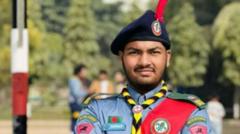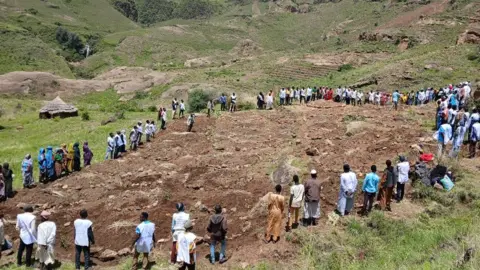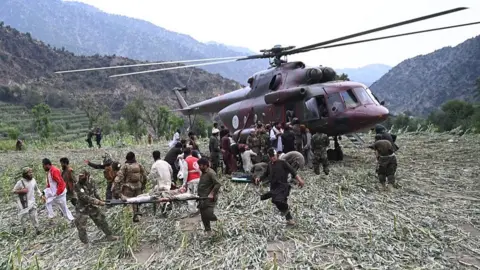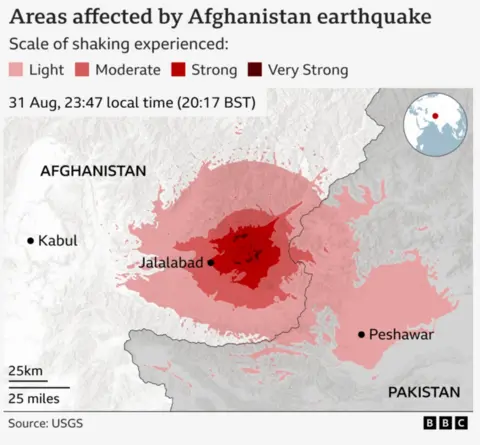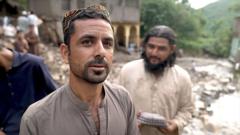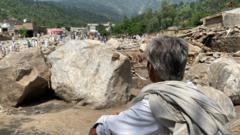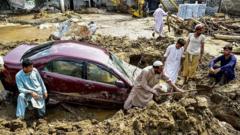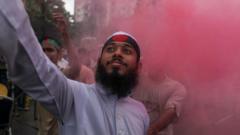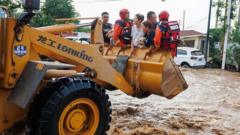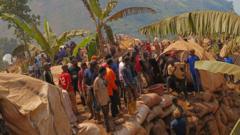On a tragic Monday in Dhaka, chaos erupted as a Bangladesh Air Force F-7 fighter jet crashed into the Milestone School and College, leading to the deadliest aviation disaster in recent years. Witnesses described an overwhelming scene of devastation as the jet, reportedly on a training flight, experienced a mechanical failure shortly after takeoff, plummeting into the school where students were waiting to be dismissed or attending after-school activities.
"I heard what sounded like thunder, and then it all changed in an instant," recounted Ahnaf Bin Hasan, an 18-year-old student who watched the disaster unfold just feet away. His reports detail a split second of fear followed by scenes of smoke, screams, and the frantic efforts to help those caught in the inferno. Amidst the chaos, Ahnaf bravely assisted his classmates, embodying strength far beyond his years.
The crash claimed at least 31 lives, with many victims being children under 12. Their stories tell a tale of tragedy that has deeply impacted families and the broader community in Uttara. One poignant narrative is that of 11-year-old Wakia Firdous Nidhi, whose disappearance led her family on a harrowing search through local hospitals, only to find they had to navigate bureaucratic obstacles before getting her body released despite clear identification.
While the government has reported 29 deaths and several injuries, discrepancies in casualty numbers have led to public concern and speculation about accountability and transparency. Parents and community members have raised alarms over the potential for a cover-up, reflecting an atmosphere of tension amidst mourning.
Acts of courage against the backdrop of horror also emerged, with stories of teachers and fellow students risking their own lives to save others from the blazing wreckage. Teacher Mahreen Chowdhury, who saved multiple students before succumbing to her injuries, stands as a testament to the heroism displayed in the wake of tragedy.
As survivors continue to grapple with trauma, the community and government are immersed in sorrow, questioning both safety measures in high-traffic areas near the airport and the historical frequency of such incidents. Amid the pain, it remains critical to acknowledge the resilience of both the community and the individuals who stepped up in the face of this catastrophic event.
Eyewitness accounts continue to haunt those who lived through the day, encapsulating a nightmare that many fear may linger indefinitely. "I can't escape the memories; every time I close my eyes, I see the smoke," Ahnaf shared, highlighting the deep psychological scars inflicted by the disaster. In the wake of this disaster, questions about aviation safety and accountability in Bangladesh are likely to reverberate for years to come.

